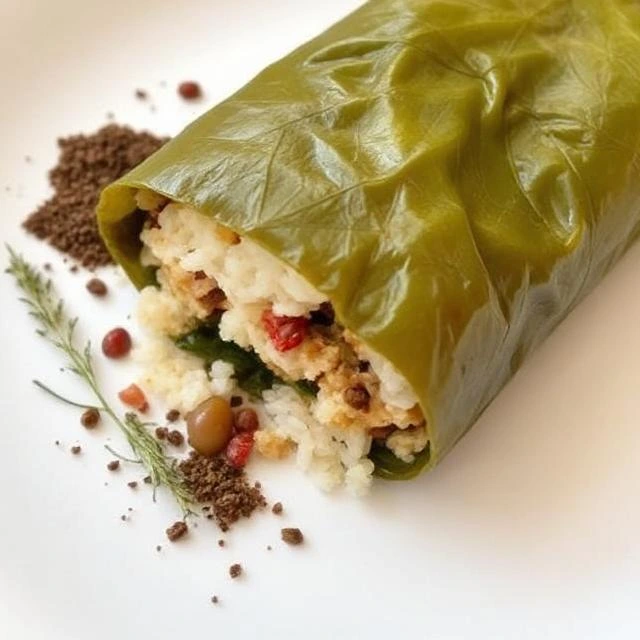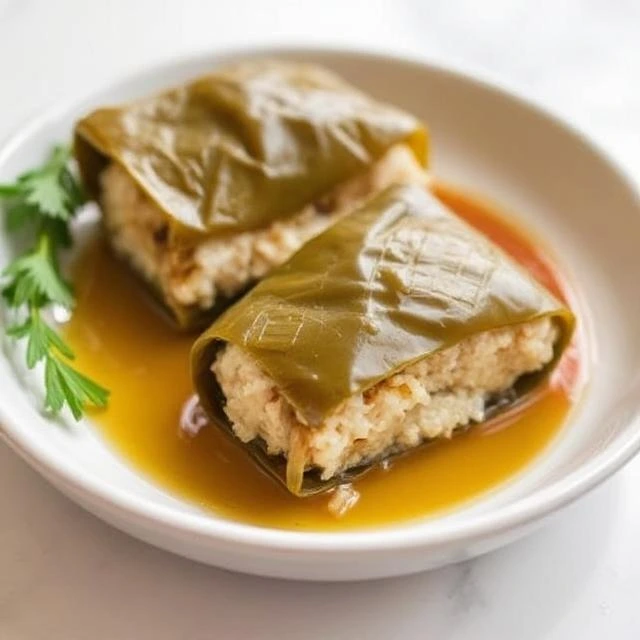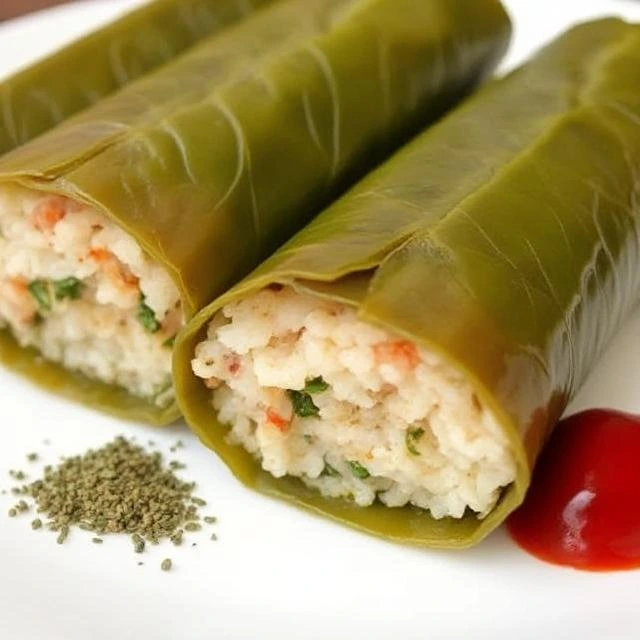INTRODUCTION
Stuffed grape leaves, known as Warak Enab in the Levant and Dolma in other Mediterranean regions, are a culinary masterpiece celebrated across the Middle East, Balkans, and beyond. These delicate parcels of flavor encapsulate centuries of tradition, with each ingredient playing a pivotal role in creating their signature taste. In this deep dive, we’ll unravel the secrets of Warak Enab’s core components—herbs, rice, and spices—and explore how they harmonize to create this iconic dish. Whether you’re a home cook or a food enthusiast, this guide will equip you with the knowledge to craft authentic, mouthwatering stuffed grape leaves.
The Cultural Legacy of Warak Enab
Warak Enab is more than a dish—it’s a symbol of hospitality, family, and regional identity. Originating in the Levant (modern-day Lebanon, Syria, Jordan, and Palestine), its roots stretch back to the Ottoman Empire, where stuffed vegetables became a staple of royal feasts. Today, it’s a centerpiece at gatherings, from Ramadan iftars to Sunday family lunches.http://”The Evolution of Levantine Cooking: From Ancient Traditions to Modern Plates”.
Deconstructing Warak Enab: Core Ingredients
The magic of Warak Enab lies in its simplicity. While recipes vary by region, the foundation remains consistent: grape leaves, rice, herbs, and spices. Let’s break down each element.

1. Grape Leaves: The Edible Vessel
Fresh or brined grape leaves are the backbone of this dish. Their tender texture and tangy flavor balance the savory filling.
- Fresh vs. Jarred: Fresh grape leaves (harvested in spring) are prized for their delicate taste, but jarred leaves (preserved in brine) are more accessible. If using jarred, rinse thoroughly to remove excess salt.
- Preparation Tip: Blanch fresh leaves in boiling water for 2–3 minutes to soften.
2. Rice: The Heart of the Filling
Short-grain rice like Egyptian Calrose or Italian Arborio is ideal. Its starchiness helps bind the filling, while its ability to absorb flavors ensures every bite is rich.
- Why Short-Grain? The plump, sticky texture prevents the filling from crumbling.
- Vegetarian Twist: Traditional recipes use rice alone, but some add ground meat (see Optional Additions below).http://”A Guide to Rice in Mediterranean Cuisine”.

3. Fresh Herbs: The Aromatic Soul
Herbs are non-negotiable in Warak Enab. They infuse brightness and depth into the rice filling.
- Parsley: The star herb, adding a grassy, slightly peppery note. Use flat-leaf (Italian) parsley for robust flavor.
- Mint: Fresh mint lends a cool, refreshing contrast. Dried mint works in a pinch but use sparingly.
- Dill: Popular in Greek and Turkish dolma, dill adds a lemony tang.
- Scallions or Chives: For subtle onion flavor without overpowering the dish.
Pro Tip: Chop herbs finely to distribute flavor evenly.
4. Spices: The Warmth and Complexity
Spices transform the filling from simple to sublime. Common choices include:
- Allspice: A Levantine staple, it offers warm notes of clove, cinnamon, and nutmeg.
- Cumin: Earthy and nutty, it adds depth.
- Cinnamon: A pinch enhances sweetness without dominating.
- Black Pepper: For a gentle heat.
- Sumac (optional): This crimson spice adds tartness, balancing the dish’s richness.
Regional Variations: Turkish recipes often include dried currants or pine nuts, while Lebanese versions favor lemon juice for acidity.http://”10 Essential Middle Eastern Spices and How to Use Them”.
5. Olive Oil & Lemon: The Finishing Touches
- Olive Oil: Drizzled over the stuffed leaves before cooking, it enriches the dish and prevents sticking. Opt for extra-virgin olive oil (EVOO) for its fruity aroma.
- Lemon: Juice or sliced lemons placed atop the rolls add acidity, cutting through the dish’s richness.
6. Optional Additions
- Ground Meat: Lamb or beef is used in meat-based versions (common in Iraq and Armenia).
- Tomatoes: Grated tomato or tomato paste adds moisture and umami.
- Pine Nuts: Toasted nuts provide crunch and luxury.

Crafting the Perfect Warak Enab: Step-by-Step Tips
- Mix Filling Gently: Overworking the rice and herbs can make the filling mushy.
- Roll Tightly, Not Too Tight: Leave room for rice to expand during cooking.
- Layer Flavors: Line the pot with leftover grape leaves or lemon slices to prevent burning.
- Low and Slow Cooking: Simmer on low heat for 45–60 minutes to meld flavors.
Why Warak Enab is a Nutritional Powerhouse
This dish is a celebration of Mediterranean diet principles:
- High in Fiber: Grape leaves and herbs aid digestion.
- Heart-Healthy Fats: Olive oil promotes cardiovascular health.
- Plant-Based Protein: Rice and herbs provide sustained energy.
FAQs About Warak Enab
Q: Can I use collard greens instead of grape leaves?
A: Yes, but adjust cooking time as collard greens are thicker.
Q: How long do leftovers last?
A: Store in an airtight container for up to 5 days. Freeze for 3 months.
Q: Is Warak Enab gluten-free?
A: Yes, if using pure rice (no bulgur) and gluten-free spices.
Conclusion: A Dish That Bridges Generations
Warak Enab is a testament to the beauty of simplicity. Each ingredient—from the humble grape leaf to the vibrant herbs—plays a role in creating a dish that’s greater than the sum of its parts. By understanding these components, you’re not just cooking a meal; you’re preserving a legacy.